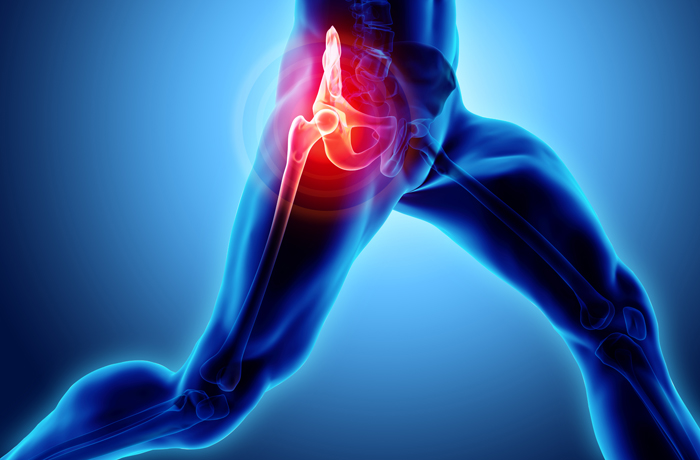Hip Arthroscopy Surgery in Sadashiv Peth, Pune
Hip arthroscopy is a surgery that allows surgeons to examine the hip joint without cutting the skin or other soft tissues.
What is Hip Arthroscopy?
Hip arthroscopy is a surgical procedure wherein the hip joint is examined by inserting an arthroscope into it, through an incision.

Why is Hip Arthroscopy Done?
Hip arthroscopy is recommended when an individual experiences severe pain and inflammation that hasn’t been relieved by nonsurgical treatments including medications, injections, physical therapy, and rest.
Various medical conditions that can cause hip damage include -
- Dysplasia - In this condition, the hip socket is very shallow due to which the stress on the labrum is extremely high. This is so that the femoral head can stay within its socket. Due to dysplasia, the labrum becomes more susceptible to tears.
- Synovitis - In this condition, the tissues surrounding the joints are inflamed.
- FAI (Femorocetabular impingement) - In this disorder, bone overgrowth occurs either along the acetabulum or on the femoral head. This bone overgrowth is called spurs and these spurs can cause damage to the tissues of the head during any movement.
- Snapping hip syndrome - In this condition, tendons rub against the outside of the joint. It can get damaged due to repetitive friction.
- Fragments of cartilage or bone becoming loose and moving around the joint
- Hip joint infection
When to see a doctor?
If you have a painful condition that does not respond to common medicines, you should see a doctor.
Request an appointment at Apollo Spectra, Pune
Call 1860-500-2244 to book an appointment
How is Hip Arthroscopy Done?
First, the patient will be administered general or regional anesthesia. Then, your surgeon will position your leg in such a way that your hip is pulled away from the socket. This is done so that the surgeon can make an incision and insert the instruments through the incision to observe the joint and perform the necessary treatments. A small hole is made in the hip for inserting the arthroscope. Through this device, the surgeon observes inside the hip joint and identifies the areas that are damaged. After identifying the problems, other small instruments are inserted for repair. This may include trimming bone spurs caused by FAI, removing inflamed synovial tissue, or repairing torn cartilage.
What Happens After Hip Arthroscopy?
After hip arthroscopy, patients will be brought to a recovery room where they will be kept for 1 to 2 hours for observation. Patients experience pain after surgery for which their doctor will prescribe pain medication. In most cases, patients can go home after this. They might require crutches until they stop limping. If the procedure was more extensive, crutches may be required for 1 to 2 months. They will also have to do certain exercises to restore mobility and strength.
What are the Complications Associated with Hip Arthroscopy?
Usually, there aren’t any complications associated with hip arthroscopy. However, as with any surgery, all surgeries, some complications that can occur after hip arthroscopy are injury to surrounding blood vessels, nerves, or the joint itself. There may be some temporary numbness due to the traction procedure. There is also a risk of blood clots in the leg or an infection.
Conclusion
Following hip arthroscopy, many people resume daily activities without any restrictions. The recovery of a patient is determined by the type of injury to the hip. Some people may need to make certain lifestyle changes to safeguard the hip joint. These changes can include shifting to low-impact activities such as swimming or cycling instead of high-impact activities such as jogging. In some cases, the hip damage is so severe that it cannot be irreverent, rendering the procedure unsuccessful.
As compared to traditional open hip surgery, there are various advantages of hip arthroscopy such as -
- Shorter recovery period
- Eliminating or delaying the need for hip replacement
- Can treat the cause of hip arthritis in its early staging, in turn preventing its advancement
- Less trauma to the joint, hence, less scarring and hip pain
The conditions that can be treated with a hip arthroscopy include -
- Hip impingement
- Trimming or repair of labral tear
- Removal of bone spurs
- Removal of the inflamed or diseased joint lining
- Removal of loose cartilage fragments
It depends on the patient whether they’re eligible for a hip arthroscopy or not. Your doctor will examine your symptoms, medical history and also perform imaging tests such as CT scans, X-rays, and MRIs. A physical exam may also be performed to determine if hip arthroscopy is ideal for your situation.
Symptoms
Our Top Specialities
NOTICE BOARD
CONTACT US
CONTACT US
 Book Appointment
Book Appointment


.svg)
.svg)
.svg)
.svg)








